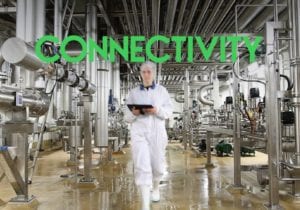Back in July I wrote a post about the launch of the Microsoft CityNext program and how Schneider Electric will be taking advantage of the Microsoft Azure Cloud platform to deliver applications that will help cities deliver new services and run existing ones more efficiently (Microsoft calls it “doing new with less”). In the few months since, it’s become clear that cities are getting the message and that real change is on the way.
CityNext is an initiative whereby Microsoft and its partners deliver solutions that address requirements in eight areas:
- Buildings, infrastructure & planning
- Education
- Energy & water
- Government administration
- Health & social services
- Public safety & justice
- Tourism, recreation & culture
- Transportation
Here’s how Microsoft describes CityNext on its web site:
Microsoft CityNext empowers people—whether governments, citizens, or businesses—to transform their cities and their future. People-first means harnessing the potential of all city residents to create healthier, greener, and more prosperous communities. Through CityNext, people can take advantage of a broad portfolio of products and technologies, a global network of partners, and a long track-record of successful education and social programs.
Through CityNext, Microsoft wants to help cities transform operations and infrastructure, engage citizens and businesses, and accelerate innovation and opportunity. Part of achieving that comes down to helping cities make sense of their data by leveraging tools such as big data technology and visualization capabilities. This is a logical progression of what we’ve already been seeing in cities. Many have embraced mobility, giving devices to employees so they have easy access to information wherever they may be. Some have done well using social media to get messages out and to take in feedback from citizens. And some are embracing cloud platforms to make IT more efficient and ramp up new services more quickly.
Clearly, though, there’s still a need to pull disparate bits of information together to help people make decisions more quickly on a daily basis. At one recent meeting I attended, the CIO of a large city made it clear he views IT as playing a big role in helping the city do its job and meet its goals. The challenge is making sense of all the data they have to help people make better decisions.
That’s the issue that many CityNext initiatives are trying to tackle. For example, I recently saw a demo of a huge, pool table-sized touch screen display powered by Microsoft software that could be used as a collaboration platform, able to pull together all sorts of data in real time. For a city, it would be useful in situations where, for example, there’s a significant disaster and the city needs to quickly mobilize resources such as police, fire departments and ambulances. The ability to pull lots of data together in real time, and see how resources are deployed, helps teams make faster and better decisions.
At Schneider Electric we already have software solutions that tackle some of these initiatives while taking advantage of Microsoft technology. Resource Advisor, for example, helps cities gather energy and carbon emission data and Energy Operations is all about gathering real time energy usage data. I see great promise in our partnership with Microsoft in using its technology to deliver innovative applications to cities across the globe.
Microsoft has a host of solutions, such as its Dynamics ERP and CRM tools, that help cities manage data for its residents, businesses, and visitors. They have comprehensive collaboration tools such as SharePoint that provide new ways for people and organizations to work together. And the visualization tool I saw does an amazing job of bringing all the data together and making it come to life. Add in the Windows Azure and it becomes a relatively simple matter to host it all and deliver it wherever it’s needed.
If cities are to realize the vision behind CityNext it will require partners like Schneider Electric, Microsoft and others to deliver the required infrastructure – software, cloud platforms, secure networks and telecommunications services. But it’s also going to involve research at universities and startups to address emerging technologies. In just the last few months, I’ve seen evidence that all the parts are starting to come together, although it’s a bit early in the game to name names.
This isn’t just a U.S.-based initiative, by the way. Just last month Microsoft announced the launch of CityNext in India. The opportunity there is tremendous, as Light Reading India reports:
Bhaskar Pramanik, Chairman – Microsoft India said, “By 2030, India will have more than 69 cities with a population of more than one million. In fact, an estimated 590 million people will be living in cities. As India prepares to modernize old infrastructure, city leaders have to meet these growing demands with tight budgets and greater citizen expectations.”
I suspect this is an issue I’ll be revisiting regularly. If you’ve got any stories to share, I’d love to hear them in the comments below. And I invite you to follow my Twitter feed for updates on this and other news: @agfpim.


